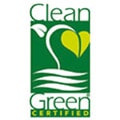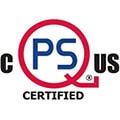UVC Air Disinfection vs. UVC Coil Disinfection for the Cannabis Grower
Over the past 20 years in the Germicidal UVC Air/Surface Treatment industry, the predominant and preferred method of UVC disinfection was one of HVAC evaporator coil disinfection. In office buildings, hospitals, schools, a plethora of molds, such as Aspergillus Niger can grow inside the coil fins and create a biofilm robbing your HVAC system of peak cooling efficiency. This is important in the day to day operating of the HVAC equipment and can help the system operate on a longer timeframe and at peak efficiency. However, most UVC lamps sized for coil cleaning are extremely limited for any airstream disinfection regardless of the targeted contaminant.
UVC Coil Cleaning is still an important application, but for indoor Cannabis Growers, removing fungus from Powdery Mildew is given precedence over maintenance of HVAC coils. For UVC to assist in the prevention of fungus such as Powdery Mildew and Botrytis within the Cannabis Growers facility, UVC Air Disinfection is the recommended application. Powdery Mildew can get trapped in HVAC coils, but it needs a host to thrive and the coil is not its favorite location for thriving. Thus, if you were to utilize UVC on HVAC evaporator coils, you would help keep the coil clean, but as for prevention of Powdery Mildew and Botrytis, your results would be minimal. Thus, if a Cannabis Grower is suffering from Powdery Mildew and Botrytis, it’s strongly recommended to apply a UVC Air Disinfection System.


Let me briefly go into some very low level UVC physics. The generic formula for performance is as follows:
Intensity x Time = Kill Rate
There are two factors that attribute to a proper UVC sizing and performance. First is contact time, how long does a UVC system have in contact with the contaminant it is trying to disinfect? Longer contact times can have higher kill rates. Second is UVC output and intensity, the great the UVC output using multiple lamps and/or aluminum reflectors the higher the kill rate. If you are designing a system to achieve a high kill rate on a surface that is stationary, like an evaporator coil, then you will focus on the contact time side of the equation and use less UVC intensity because contact time is your ally. The UVC coil lamps will be on 24/7 constantly shining on the coil building up lethal dosages every cumulative minute, hour, day until it has disinfected the coil surfaces. It is not necessary for a large number of lamps in this application because we are using time to our advantage.
When we are dealing with UVC Air Disinfection, we do not have the luxury of time. We only have a fraction of a second where the contaminant is in contact with the UVC lamp. Thus, we have to focus on the intensity side of the equation. We increase UVC intensity by applying multiple UVC lamps to the airstream, we utilize aluminum reflection to gain the most UVC output of the lamp to the desired airstream, and we utilize a system that mounts parallel to the airstream for maximum contact time. In some cases, this is sufficient for a desired disinfection level. However, with some contaminants this is only part of the answer. To further gain the required disinfection level, it is recommended that we utilize a recirculation system that can achieve over 10 air changes per hour. This is why the ideal install place is the existing HVAC ductwork – return or supply ductwork. In many indoor Cannabis facilities, air changes per hour are always higher than 10 per hour because of the heat load of the grow lamps. When we are designing and sizing our UVC Air Disinfection systems, Sanuvox always sizes to achieve a minimum of 95% disinfection on airborne Powdery Mildew spores every hour.
Powdery Mildew spores are always present and the goal is to implement a system that can reduce the airborne spores up to 99% every hour, lowering the level of spores where the plant can fight them naturally. It’s best to utilize a commercial UVC system that is designed for airstream disinfection and can be duct mounted to disinfect the largest portion of air on every air change. A small portable or small stand-alone system cannot compete with the air being pulled into the HVAC system. Thus, if you are utilizing portable units, make sure they are achieving well over 10 air changes per hour or they will never be able to disinfect a large portion of air and the HVAC system will overpower their small fans.
It is strongly recommended that you ask your UVC supplier for a performance calculation showing their disinfection levels on Powdery Mildew on a per hour basis. You cannot take their word for it because not all contaminants are susceptible to UVC at the same dosage level. For example, E.coli, influenza, serratia marcescens bacteria are quite easy to kill with UVC compared with Aspergillus Niger, Powdery Mildew, or Botrytis molds and fungus. Do not be mis-lead with the suggestion that UVC coil disinfection can provide the same performance or kill rate as a specifically sized UVC Air Disinfection system. Request a performance calculation from your UV supplier showing the % kill rate for Powdery Mildew every hour. This will help you determine if the company can produce the results you are looking for.
When 1 pound of product can provide sales of $1,600 or more, it’s best to choose a proven UVC air disinfection system that has case studies, research, and accurate projected disinfection based on your specific growing rooms, not on a rule of thumb.





